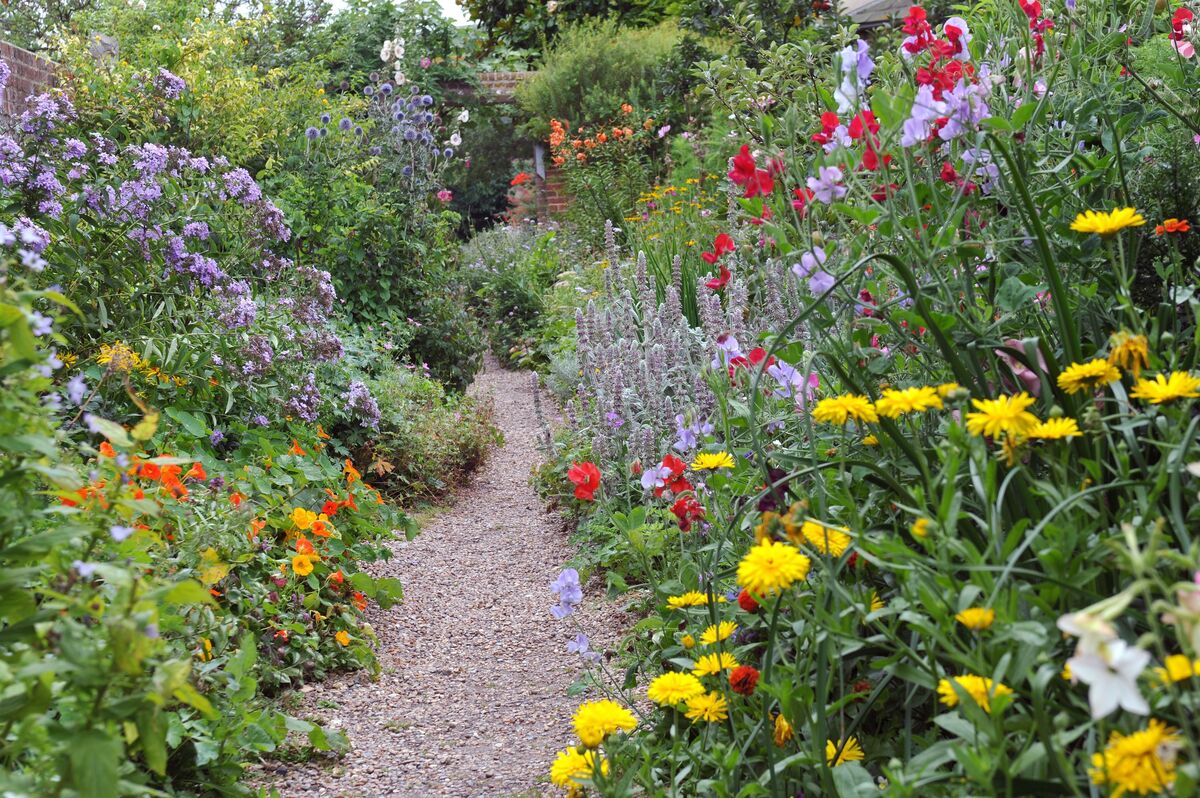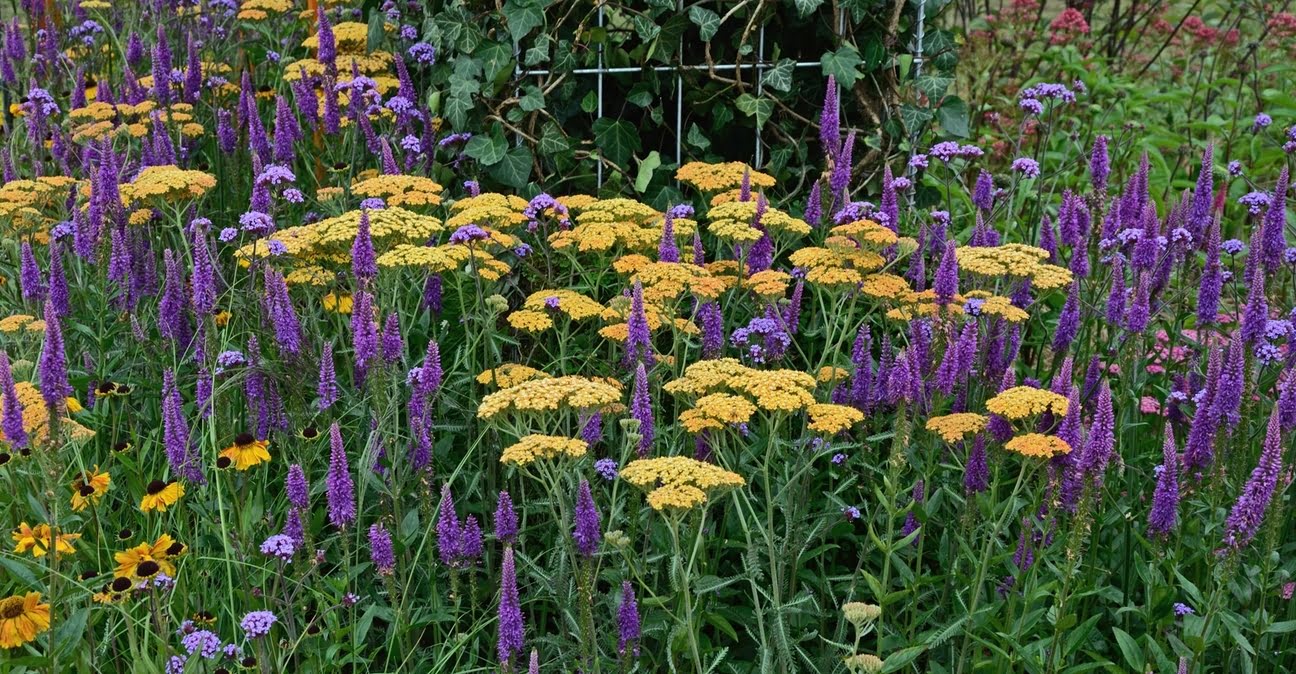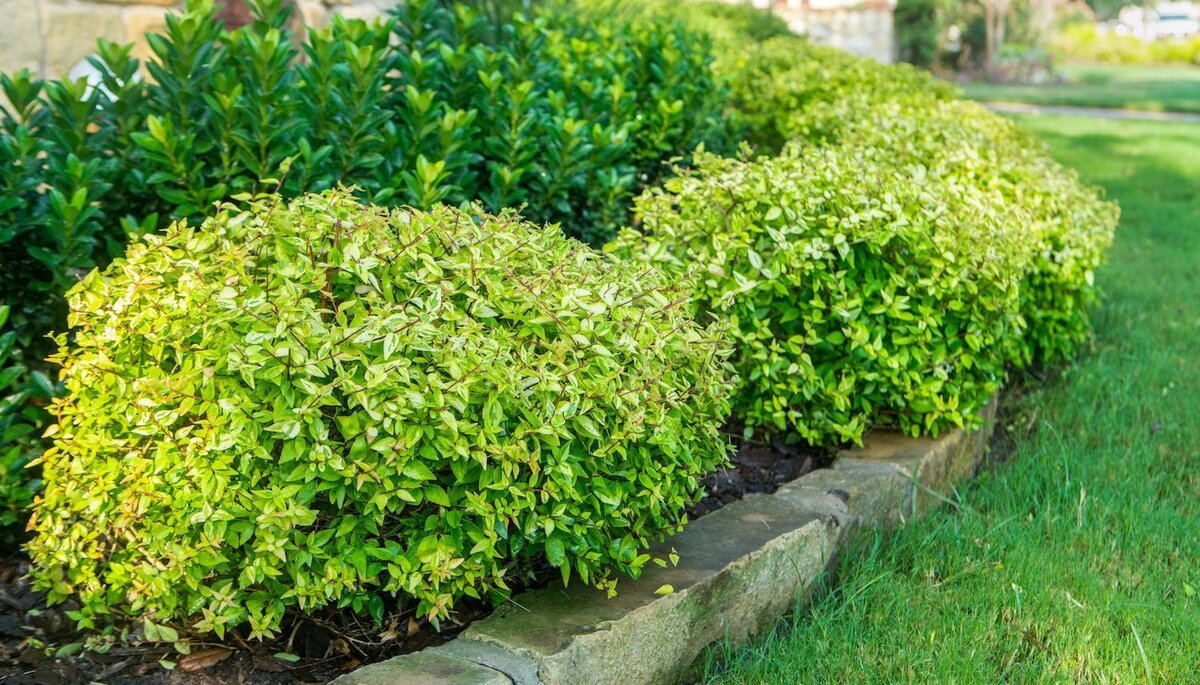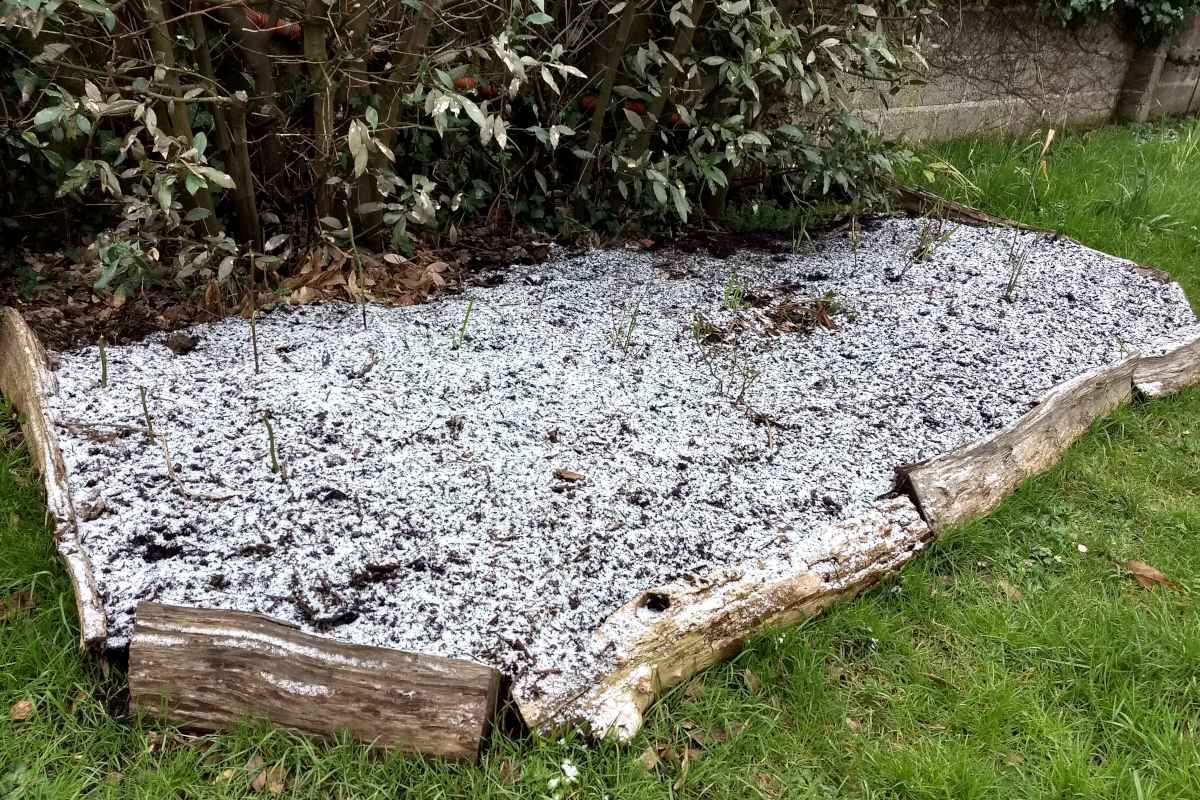Home>Gardening Techniques>Plant Care>What Shrubs To Plant In Full Sun


Plant Care
What Shrubs To Plant In Full Sun
Modified: January 22, 2024
Discover the best shrubs to plant in full sun and get expert plant care tips. Create a vibrant and thriving garden with our comprehensive guide.
(Many of the links in this article redirect to a specific reviewed product. Your purchase of these products through affiliate links helps to generate commission for Chicagolandgardening.com, at no extra cost. Learn more)
Table of Contents
Introduction
Welcome to the world of plant care, where the beauty of nature is nurtured with love and attention. If you have a sunny garden or a patch of land that receives ample sunlight throughout the day, then you have the perfect canvas to create a vibrant and thriving shrub-filled oasis. But with so many options to choose from, how do you decide which shrubs will flourish in full sun?
Choosing the right shrubs for full sun can make all the difference in creating a healthy and visually appealing landscape. It’s important to consider various factors such as sunlight exposure, soil conditions, climate, and maintenance requirements. By selecting appropriate shrubs that are well-suited to these conditions, you can create a low-maintenance and stunning garden that will be the envy of your neighbors.
In this article, we will explore the factors to consider when choosing shrubs for full sun and highlight some of the best options available. Whether you’re looking for shrubs that provide colorful blooms, interesting foliage, attracting pollinators, or simply adding structure and texture to your garden, we’ve got you covered.
Before we dive into the specific types of shrubs, let’s take a closer look at the key factors that should guide your decision-making process. Understanding these factors will help you make informed choices and ensure the success of your sunny garden.
Factors to Consider When Choosing Shrubs for Full Sun
When it comes to selecting shrubs for full sun, there are several important factors to keep in mind. Considering these factors will help you choose the right shrubs that will thrive in the intense sunlight and provide a stunning display in your garden. Let’s explore them in more detail:
- Sunlight Exposure: Full sun means that the area receives at least 6-8 hours of direct sunlight per day. It is crucial to select shrubs that are adapted to such intense sunlight and can withstand the heat. Look for shrubs that are specifically labeled as “full sun” tolerant.
- Soil Conditions: Consider the type of soil in your garden. Some shrubs prefer well-draining soil, while others can tolerate a range of soil types. Test your soil’s pH level and fertility to ensure it meets the requirements of the shrubs you choose.
- Climate: Different shrubs have different climate preferences. Consider your USDA hardiness zone and choose shrubs that are suitable for your region. Check if the shrubs can tolerate the winter cold or the summer heat in your area.
- Watering Requirements: Evaluate the watering needs of the shrubs. Some shrubs are drought-tolerant and require minimal watering once established, while others need regular watering to thrive. Choose shrubs that align with your watering capabilities and garden conditions.
- Maintenance: Consider the level of maintenance you’re willing to commit to. Some shrubs require regular pruning, fertilizing, or pest control, while others are relatively low-maintenance. Be realistic about the time and effort you can invest in caring for your shrubs.
By considering these factors, you can narrow down your options and select shrubs that are best suited to your garden’s specific conditions. Now, let’s dive into some of the top shrubs that thrive in full sun, providing a burst of color and beauty to your landscape.
Types of Shrubs That Thrive in Full Sun
When it comes to selecting shrubs that will thrive in full sun, there are a plethora of options to choose from. These shrubs not only tolerate the intense sunlight but also provide a stunning visual display with their blooms, foliage, or unique features. Here are some of the top shrubs that are well-suited for full sun gardens:
- Rose of Sharon: The Rose of Sharon (Hibiscus syriacus) is a deciduous shrub known for its striking flowers that bloom in a variety of colors, including pink, blue, white, and purple. It thrives in full sun and can reach a height of 8-12 feet, adding vertical interest to your garden.
- Butterfly Bush: The Butterfly Bush (Buddleja davidii) is aptly named as it attracts a plethora of butterflies with its fragrant nectar-rich flowers. It blooms in a range of colors, including purple, white, pink, and orange. This shrub loves full sun and can grow up to 10 feet tall.
- Crape Myrtle: Crape Myrtle (Lagerstroemia) is a stunning shrub that adds vibrant color to any garden. It is known for its long-lasting summer blooms in shades of pink, red, purple, and white. Crape Myrtles prefer full sun and are available in a variety of sizes, ranging from dwarf to large shrubs.
- Russian Sage: Russian Sage (Perovskia atriplicifolia) is a perennial shrub featuring aromatic silvery-gray foliage and delicate lavender-blue flowers. It is drought-tolerant, making it an ideal choice for full sun gardens. Russian Sage can reach a height of 3-4 feet and adds a touch of elegance to any landscape.
- Spirea: Spirea is a versatile shrub with a wide range of varieties, all of which thrive in full sun. They are known for their clusters of colorful flowers and attractive foliage. Whether you choose the bridal wreath spirea with its cascading white blooms or the vibrant goldflame spirea with its red and yellow foliage, these shrubs will add beauty to your garden.
These are just a few examples of shrubs that thrive in full sun gardens. Other options include barberry, potentilla, juniper, viburnum, and boxwood. Each of these shrubs has its own unique characteristics that make them suitable for sunny conditions. Consider the overall aesthetic you want to achieve, whether it’s colorful blooms, interesting foliage, or attracting pollinators, and select the shrubs that align with your vision.
Now that you have a better understanding of the types of shrubs that thrive in full sun, you can start planning and designing your garden for a stunning and vibrant landscape. Remember to consider the specific needs of each shrub and create an environment that will allow them to flourish. Happy gardening!
Rose of Sharon
The Rose of Sharon (Hibiscus syriacus) is a beautiful and versatile shrub that thrives in full sun. It is known for its stunning flowers that bloom from mid-summer to fall, adding a burst of color to your garden. The flowers come in a variety of colors, including pink, blue, white, and purple, and are often adorned with a contrasting red or maroon center.
This deciduous shrub can reach a height of 8 to 12 feet and has a medium to fast growth rate. Its upright and symmetrical growth habit makes it a great choice for hedges or as a standalone focal point in your garden. The Rose of Sharon also has attractive green leaves that create a lush backdrop for the vibrant flowers.
What sets the Rose of Sharon apart is its ability to attract pollinators, such as bees and butterflies, with its nectar-rich flowers. It serves as a valuable food source for these beneficial insects, helping to promote a healthy ecosystem in your garden. Additionally, the Rose of Sharon is deer-resistant, making it a great choice for gardens in areas prone to deer damage.
This shrub is relatively low-maintenance, requiring moderate watering and full sun exposure. It is adaptable to a wide range of soil types but prefers well-draining soil. Pruning is recommended in late winter or early spring to maintain its shape and promote healthy growth.
The Rose of Sharon is a versatile shrub that can be used in various ways in your garden. Plant it as a colorful privacy screen, a hedge along a property line, or as an eye-catching specimen plant. It also looks stunning when planted in mixed borders, providing a vertical element amidst other flowering perennials and shrubs.
Whether you’re looking to add a pop of color, attract pollinators, or create a focal point in your garden, the Rose of Sharon is a fantastic choice. With its beautiful blooms, adaptability, and low-maintenance nature, this shrub will certainly elevate the aesthetics of your full sun garden.
Butterfly Bush
The Butterfly Bush (Buddleja davidii) is a stunning shrub that is sure to attract a flurry of butterflies to your garden. With its beautiful and fragrant flowers, it adds both color and fragrance to any landscape. This shrub is native to Asia and can grow up to 10 feet tall, making it a great choice for adding vertical interest to your garden.
The Butterfly Bush is well-known for its long panicles of flowers that bloom in a range of colors, including purple, white, pink, and orange. These flowers are rich in nectar and serve as a magnet for butterflies, bees, and other beneficial pollinators. If you’re looking to create a vibrant and wildlife-friendly garden, the Butterfly Bush is a must-have.
One of the notable characteristics of this shrub is its ability to bloom from summer until late fall. This prolonged blooming period ensures that your garden remains filled with color and activity, even during the later months of the growing season. The flowers also have a pleasant fragrance, adding an extra sensory appeal to your outdoor space.
In terms of care, the Butterfly Bush prefers full sun exposure. It thrives in well-draining soil and can tolerate a wide range of soil types. This shrub is relatively low-maintenance and requires minimal pruning, usually in early spring to encourage new growth. As a bonus, the Butterfly Bush is also deer-resistant, reducing the chances of your garden being damaged by wildlife.
The Butterfly Bush is an excellent choice for creating a focal point in your garden or even as part of a mixed border planting. Its tall growth habit makes it ideal for the back of a flower bed or as a standalone accent plant. It pairs well with other summer-blooming perennials and annuals, adding verticality and attracting even more pollinators.
Whether you’re looking to attract butterflies and bees, add fragrance and color to your garden, or simply enjoy the beauty of this showy shrub, the Butterfly Bush is a fantastic option. With its vibrant flowers, attractive form, and wildlife-friendly nature, it is sure to bring joy and life to your full sun garden.
Crape Myrtle
The Crape Myrtle (Lagerstroemia) is a stunning and versatile shrub that thrives in full sun. Known for its vibrant summer blooms in a variety of colors, this shrub adds a burst of color and beauty to any garden. It is native to Asia but has become a popular choice for gardens worldwide.
One of the standout features of the Crape Myrtle is its long-lasting and abundant flowers. From late spring to early fall, clusters of delicate and crinkled flowers cover the shrub, creating a spectacular display of color. The flowers can be found in shades of pink, red, purple, and white, allowing you to choose the perfect color to complement your garden palette.
In addition to its beautiful flowers, the Crape Myrtle also has attractive bark, which peels away to reveal smooth and colorful layers underneath. During the winter months, the bark provides visual interest, making this shrub a year-round asset to your garden landscape.
The Crape Myrtle is a relatively low-maintenance shrub, making it an excellent choice for busy gardeners. It prefers well-draining soil and requires regular watering during dry spells. Pruning is recommended in late winter or early spring to maintain its shape and remove any dead wood.
There are many varieties of Crape Myrtle to choose from, ranging in size from compact shrubs to larger tree-like forms. This makes it a versatile plant for various garden settings, whether you have limited space or want to create a statement centerpiece. Some popular cultivars include ‘Natchez’ with its white flowers, ‘Dynamite’ known for its vivid red blooms, and ‘Acoma’ with its delicate pink flowers.
Utilize Crape Myrtles in your full sun garden as a focal point, in mixed borders, or as a privacy screen. They also make excellent container plants if you have limited garden space or want to add color to your patio or deck. Pair them with perennials, ornamental grasses, or other shrubs to create a dynamic and visually appealing landscape.
With their vibrant blooms, interesting bark, and low-maintenance nature, Crape Myrtles are a fantastic addition to any full sun garden. They provide color, texture, and beauty throughout the summer months, ensuring that your garden remains a colorful and inviting space.
Russian Sage
Russian Sage (Perovskia atriplicifolia) is a stunning perennial shrub that thrives in full sun, making it an excellent choice for bright and sunny gardens. Native to Central Asia, this shrub is loved for its delicate lavender-blue flowers and aromatic silvery-gray foliage.
One of the standout features of Russian Sage is its ability to attract pollinators. The nectar-rich flowers are highly attractive to bees, butterflies, and hummingbirds, adding a lively and vibrant atmosphere to your garden. These pollinators play a crucial role in maintaining a healthy ecosystem and will be drawn to the Russian Sage’s abundant blooms.
Aside from its pollinator-attracting qualities, Russian Sage is also a visually striking plant. The wispy, silver-gray foliage provides an interesting contrast to other plants in the garden. The lavender-blue flowers create a lovely vertical element and add a touch of elegance to any landscape.
Another advantage of Russian Sage is its ability to thrive in challenging conditions, including hot and dry environments. It has remarkable drought tolerance, making it an excellent choice for water-wise gardens. Once established, Russian Sage requires minimal watering, making it an ideal low-maintenance option for busy gardeners.
This shrub typically reaches a height of 3 to 4 feet, with a spread of 2 to 4 feet, creating a beautiful mound-like form. Pruning can help maintain its shape and encourage bushier growth. It is best to prune in early spring, cutting back one-third of the previous year’s growth.
Russian Sage is a versatile shrub that can be used in various garden settings. It makes a striking border or edging plant, creating a soft and airy backdrop for other flowering perennials. It can also be planted in groups or clusters, creating a mass of lavender-blue blooms that is simply breathtaking.
Pair Russian Sage with other full sun-loving plants like coneflowers, ornamental grasses, and Black-eyed Susans to create a vibrant and texturally diverse garden. It also looks stunning in combination with silver-foliaged plants like lamb’s ear or purple-leafed plants like Purple Smoke Bush.
With its captivating lavender-blue flowers, aromatic foliage, and ability to thrive in sunny and arid conditions, Russian Sage is a fantastic choice for any full sun garden. It adds beauty, attracts pollinators, and requires minimal care, making it an excellent addition for both novice and experienced gardeners.
Spirea
Spirea is a versatile and hardy shrub that thrives in full sun, making it a popular choice for gardens. There are numerous varieties of Spirea available, each with its own unique characteristics, but all of them bring beauty and interest to your landscape.
One of the standout features of Spirea is its clusters of colorful flowers that adorn the branches. The flowers can range from white and pink to deep red, depending on the variety. These blooms provide a cheerful and vibrant display in your garden, attracting bees and butterflies as they sip on the nectar-rich flowers.
In addition to their charming flowers, Spirea shrubs also have attractive foliage. The leaves can be green, gold, or even variegated, adding visual interest and texture to your garden. Some varieties undergo stunning color changes in the fall, turning shades of orange, red, or purple, creating a beautiful autumnal display.
Spirea is generally easy to care for, making it suitable for both beginner and experienced gardeners. It prefers well-draining soil and can tolerate a wide range of soil types. Regular watering is important during the first year of establishment, but once mature, it becomes more drought-tolerant.
Pruning Spirea is recommended in early spring to maintain its shape and encourage new growth. Depending on the specific variety, some Spirea can benefit from rejuvenation pruning every few years to promote a more compact and vigorous shrub.
There are many ways to incorporate Spirea into your garden design. If you’re looking to create a low hedge or border, varieties like ‘Goldflame’ or ‘Magic Carpet’ with their dense and compact growth habits are excellent choices. For a show-stopping centerpiece, ‘Neon Flash’ with its vibrant pink flowers makes a bold statement.
Spirea also pairs well with other sun-loving plants in mixed borders or perennial beds. Consider combining it with plants like coneflowers, daylilies, or ornamental grasses for a visually captivating display. The contrasting colors and textures will create a dynamic and balanced landscape.
Whether you’re seeking vibrant flowers, beautiful foliage, or a shrub that is easy to care for, Spirea is a fantastic choice. Its versatility, hardiness, and ability to thrive in full sun make it a valuable addition to any garden.
Barberry
Barberry (Berberis) is a versatile and visually striking shrub that thrives in full sun. With its colorful foliage, thorny stems, and attractive berries, it adds both beauty and security to your garden. There are many different varieties of Barberry, each offering its own unique charm and characteristics.
One of the standout features of Barberry is its foliage. The leaves can range in color from vibrant shades of red, orange, and yellow, to deep purples and greens. This colorful foliage provides year-round interest, ensuring that your garden remains vibrant even outside of the blooming season.
Aside from its foliage, Barberry also produces small clusters of flowers in the spring. These flowers are often inconspicuous, but they give way to small, vibrant berries that add a pop of color to the shrub. These berries not only provide visual interest but also attract birds to your garden.
Barberry is a hardy shrub that is relatively easy to care for. It is adaptable to a wide range of soil types and is tolerant of drought once established. It is also resistant to most pests and diseases, making it a low-maintenance addition to your garden.
Some varieties of Barberry have thorny branches, making them excellent choices for security hedges or natural barriers. The thorns act as a deterrent to potential intruders, adding an extra layer of protection to your property. Additionally, the dense and thorny growth habit provides shelter and nesting sites for birds and other small wildlife.
With their stunning foliage, colorful berries, and low-maintenance nature, Barberries are suitable for a variety of garden settings. They can be used as hedges, border plants, or as specimen plants in mixed beds. They also work well in containers, adding a unique element to your patio or balcony.
When selecting a Barberry variety, consider the ultimate size of the shrub to ensure it fits well within your garden space. Some popular cultivars include ‘Crimson Pygmy’ with its compact size and deep red foliage, ‘Golden Nugget’ with its vibrant yellow leaves, and ‘Rose Glow’ with its variegated foliage in hues of pink, red, and purple.
Whether used for its security features, vibrant foliage, or wildlife attraction, Barberry is a fantastic choice for full sun gardens. With its versatility and eye-catching colors, it will surely enhance the aesthetics and functionality of your outdoor space.
Potentilla
Potentilla (Potentilla spp.) is a delightful and versatile shrub that thrives in full sun. With its abundant and colorful flowers, it adds a cheerful and vibrant touch to any garden. Potentilla is part of the rose family and is known for its hardiness, adaptability, and long blooming period.
One of the standout features of Potentilla is its beautiful flowers, which bloom from late spring to late summer. The flowers come in a range of colors, including yellow, orange, red, pink, and white, adding a burst of color and interest to your garden. The blossoms are often compared to small roses, hence the common name “cinquefoil,” which means “five leaves.”
Potentilla is a relatively low-maintenance shrub, making it a great choice for busy gardeners. It is adaptable to a variety of soil types and can tolerate dry conditions once established. It requires moderate watering, especially during hot and dry spells. Pruning is recommended in early spring to maintain its shape and promote bushier growth.
With its compact and mounding growth habit, Potentilla is an excellent choice for borders, edges, or as a ground cover. It creates a dense carpet of foliage, with the flowers sitting atop the dense foliage, creating a beautiful display. The compact size also makes it suitable for small gardens or container planting.
Potentilla is known for its ability to attract butterflies and bees, making it a great addition to pollinator-friendly gardens. The nectar-rich flowers serve as a valuable food source for these beneficial insects and help support a healthy ecosystem in your garden.
Popular varieties of Potentilla include ‘Goldfinger’ with its golden-yellow flowers, ‘Pink Beauty’ with its soft pink blooms, and ‘Abbotswood’ with its pure white flowers. Each variety offers its own unique charm and can be mixed and matched to create a stunning display of colors in your garden.
Whether used as a border plant, ground cover, or container plant, Potentilla is sure to add vibrant color and charm to your full sun garden. Its long blooming period, adaptability, and attractiveness to pollinators make it a valuable addition to any landscape.
Juniper
Juniper (Juniperus) is a versatile and resilient shrub that thrives in full sun. With its unique foliage, interesting growth habits, and low-maintenance nature, it adds both beauty and functionality to any garden. Junipers are evergreen shrubs, meaning they retain their foliage year-round, providing color and texture even in the winter months.
One of the standout features of Junipers is their foliage, which appears in various shades of green, blue, silver, and gold, depending on the variety. The needle-like leaves can be soft and feathery or rigid and spiky, adding a unique texture to your garden. This foliage remains vibrant and beautiful throughout the year, enhancing the visual appeal of your outdoor space.
Junipers are known for their versatility in garden design. They come in various sizes, ranging from low-growing groundcovers to tall and upright forms. This makes them suitable for many purposes, including hedges, borders, windbreaks, or as specimen plants. They can also be pruned into topiaries or shaped into interesting forms, providing a sculptural element to your landscape.
One of the advantages of Junipers is their ability to tolerate a wide range of soil conditions, including poor and rocky soils. They are also drought-tolerant once established, making them ideal for dry and sunny locations. These qualities make them low-maintenance shrubs that require minimal watering and fertilizer.
In addition to their aesthetic appeal, Junipers provide practical benefits as well. Their dense growth habit makes them excellent choices for privacy screening and noise reduction. They can create natural barriers along property lines or serve as a windbreak, protecting more fragile plants in your garden.
Some popular varieties of Junipers include ‘Blue Rug’ with its low-growing and spreading form, ‘Skyrocket’ with its tall and narrow growth habit, and ‘Gold Coast’ with its golden-yellow foliage. Each variety offers its own unique characteristics, allowing you to choose the perfect Juniper to suit your garden’s needs.
Whether you’re looking for an attractive evergreen, a privacy screen, or a versatile shrub with various forms and textures, Juniper is an excellent choice for your full sun garden. Its adaptability, low-maintenance nature, and year-round appeal make it a valuable addition to any landscape.
Viburnum
Viburnum is a versatile and visually appealing shrub that thrives in full sun. With its beautiful flowers, attractive foliage, and often fragrant blooms, it adds beauty, charm, and interest to any garden. Viburnums belong to a diverse genus with numerous species and varieties, making it easy to find the perfect Viburnum to suit your preferences.
One of the standout features of Viburnum is its stunning and often fragrant flowers. Depending on the species and variety, the flowers can be white, pink, or even creamy-yellow. These blooms typically appear in the spring and can last for several weeks, creating a lively and vibrant display in your garden.
Aside from their flowers, Viburnums also have attractive foliage. The leaves can be various shades of green, from light to dark, and some species have textured or serrated edges, adding interest and texture to your garden. The foliage often transitions to vibrant shades of red, orange, or purple in the fall, providing a beautiful autumnal display.
Viburnums are generally low-maintenance shrubs, making them suitable for both beginner and experienced gardeners. They prefer well-draining soil and moderate watering, but they can tolerate a range of soil conditions. Pruning is typically done after the blooming season, allowing for healthy growth and maintaining a pleasing shape.
One of the advantages of Viburnum is its ability to attract wildlife to your garden. The fragrant flowers often attract butterflies, bees, and other beneficial pollinators, promoting a healthy ecosystem. The berries that follow the blooms are highly attractive to birds, providing a valuable food source and increasing biodiversity in your outdoor space.
Popular varieties of Viburnum include ‘Snowball’ with its large white snowball-like flowers, ‘Arrowwood’ with its fragrant white blooms and glossy foliage, and ‘Korean Spice’ with its clusters of pink and fragrant flowers. Each variety offers its own unique charm and characteristics, allowing you to choose the perfect Viburnum to suit your garden’s needs.
Whether used as a specimen plant, hedge, or part of a mixed border, Viburnums are sure to enhance the aesthetics of your full sun garden. Their beautiful flowers, attractive foliage, and tolerance for various soil conditions make them a valuable addition to any landscape.
Boxwood
Boxwood (Buxus) is a classic and timeless shrub that thrives in full sun. Loved for its elegant and formal appearance, boxwood is a versatile shrub that can be pruned into various shapes and sizes to suit your garden’s design. Its dense foliage, glossy leaves, and adaptability make it a popular choice for both traditional and contemporary gardens.
One of the standout features of boxwood is its dense and compact growth habit. The small, oval-shaped leaves form a lush and green backdrop that adds structure and formality to your garden. This dense foliage also makes boxwood an excellent choice for creating hedges, borders, or formal topiaries.
Boxwood is known for its ability to withstand regular pruning and shaping. This makes it a favorite among gardeners who wish to create geometrically structured gardens or precise topiaries. It can be pruned into cubes, cones, spheres, or intricate shapes, adding a touch of elegance and sophistication to any garden.
In addition to its formal appeal, boxwood is also a hardy and low-maintenance shrub. It prefers well-draining soil and moderate watering, but it can tolerate a wide range of soil conditions. Once established, boxwood is relatively drought-tolerant, making it a reliable addition to your full sun garden.
Boxwood is available in different cultivars, offering variations in size, leaf color, and growth habit. Some popular varieties include ‘Green Velvet’ with its vibrant green leaves, ‘Wintergreen’ with its lustrous dark green foliage, and ‘Suffruticosa’ with its small and compact growth habit. Each variety brings its own unique charm to the garden.
Boxwood is an excellent choice for creating structure, defining garden spaces, or providing a formal backdrop for other plants. It can be used as a low hedge to edge flower beds, to frame a pathway, or even as standalone specimens in containers or focal points in the garden.
Overall, boxwood is a versatile and enduring shrub that adds elegance, formality, and structure to full sun gardens. Its dense foliage, ability to be shaped, and low-maintenance nature make it a popular choice among gardeners seeking a classic and refined look for their outdoor spaces.
Conclusion
Choosing the right shrubs for full sun gardens can transform your outdoor space into a vibrant and thriving oasis. By considering factors such as sunlight exposure, soil conditions, climate, watering requirements, and maintenance, you can make informed choices to ensure the success of your sunny garden.
In this article, we explored a variety of shrubs that thrive in full sun, each with its own unique characteristics and beauty. From the colorful blooms of Rose of Sharon and Butterfly Bush to the stunning foliage of Crape Myrtle and Russian Sage, there are options to suit every garden style and preference.
The versatile and low-maintenance nature of shrubs like Spirea, Barberry, Potentilla, Juniper, Viburnum, and Boxwood make them excellent choices for full sun gardens. Whether you’re looking for vibrant flowers, textured foliage, attracting pollinators, or creating formal structure, these shrubs can fulfill your gardening aspirations.
Remember to consider the specific needs of each shrub, including sunlight exposure, soil, watering, and pruning requirements. This will ensure that your chosen shrubs thrive and provide optimal beauty and impact in your full sun garden.
Now armed with a wealth of knowledge about various shrubs, you can confidently plan and design your garden to create a visually stunning and thriving outdoor space. Whether you decide to create a colorful flower bed, a fragrant pollinator garden, or an elegant formal arrangement, the choice of shrubs for full sun gardens is vast and exciting.
So go ahead and bring the beauty of nature to life with the right selection of shrubs for your full sun garden. With proper care, attention, and a touch of creativity, your garden will flourish, providing joy and tranquility for years to come.









